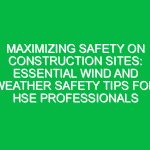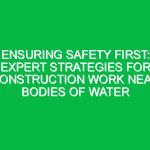In the realm of construction, maintenance, and several other industries, Mobile Elevated Work Platforms (MEWPs) are indispensable tools that elevate workers to heights where they can perform their tasks efficiently. However, working at heights introduces a significant risk of falls and injuries, making safety compliance not just a regulatory requirement but a critical necessity. This article delves into essential safety tips and compliance measures for MEWPs, ensuring a safer working environment for everyone involved.
Understanding MEWPs and Their Importance
MEWPs, also known as aerial work platforms (AWPs), are mechanical devices used to provide temporary access for people or equipment to inaccessible areas, usually at height. They are widely used across various sectors, including construction, warehousing, and even in emergency rescue operations. The versatility and efficiency of MEWPs have made them a staple in tasks that involve working at height.
Key Safety and Compliance Tips for MEWPs
Ensuring the safety of workers operating or working near MEWPs involves a comprehensive approach that includes training, equipment maintenance, and adherence to safety protocols. Here are essential tips to maximize safety and ensure compliance when using MEWPs:
1. Prioritize Operator Training and Certification
One of the foundational steps in ensuring MEWP safety is to ensure that operators are properly trained and certified. Training programs should cover the operation, inspection, and handling of emergencies specific to the type of MEWP being used. A well-trained operator is not only a regulatory requirement but also a critical asset in preventing accidents.
2. Conduct Regular Equipment Inspections
Before any MEWP is used, it’s crucial to perform a thorough inspection to identify any potential mechanical failures or safety hazards. Daily checks should include examining the structural integrity, controls, safety devices, and personal protective equipment (PPE). Regular maintenance and inspections by qualified personnel can prevent equipment failure and accidents.
3. Implement a Fall Protection Plan
Even with the safest MEWP, the risk of falls cannot be entirely eliminated. Therefore, having a robust fall protection plan is essential. This includes the use of harnesses, lanyards, and other fall arrest systems designed to protect workers in the event of a fall. Ensuring that all workers are familiar with the fall protection plan and properly equipped is crucial for safety.
4. Establish Safe Work Zones
MEWPs often operate in busy environments where the risk of collision or interference with other operations is high. Establishing safe work zones around the MEWP can help mitigate these risks. This may involve using barriers, signs, and signals to alert others to the presence of the MEWP and maintain a safe distance.
5. Adhere to Load Capacity Limits
Overloading a MEWP can lead to structural failure or loss of balance, posing a significant risk to operators and bystanders. It’s essential to adhere to the manufacturer’s specified load capacity limits, which include the weight of the operator, tools, and any materials being lifted.
Understanding the Regulatory Landscape
Compliance with local and international safety standards is not just about avoiding legal penalties; it’s about protecting lives. Regulations such as the Occupational Safety and Health Administration (OSHA) in the United States, the Health and Safety Executive (HSE) in the United Kingdom, and similar bodies worldwide set out specific requirements for MEWP operation, training, and maintenance. Staying informed about these regulations and ensuring compliance is a key responsibility for employers and operators alike.
Embracing Technology for Enhanced Safety
The integration of technology into MEWPs has opened new avenues for enhancing safety. Features such as anti-collision sensors, automatic leveling, and remote monitoring can significantly reduce the risk of accidents. Investing in MEWPs equipped with these technologies, or upgrading existing equipment, can be a wise move for enhancing safety and compliance.
Creating a Culture of Safety
Ultimately, the most effective safety measures are those that are ingrained in the workplace culture. Creating a culture of safety involves regular training, open communication about hazards, and a shared commitment to following safety protocols. When safety becomes a core value, rather than just a compliance requirement, the likelihood of accidents and injuries can be significantly reduced.
Summary of Key Points
Maximizing safety on MEWPs requires a multifaceted approach that includes:
- Ensuring operators are properly trained and certified.
- Conducting regular equipment inspections and maintenance.
- Implementing a comprehensive fall protection plan.
- Establishing safe work zones to prevent collisions and interference.
- Adhering to load capacity limits to prevent overloading.
- Staying informed about and compliant with safety regulations.
- Embracing technology that enhances safety features of MEWPs.
- Creating a workplace culture that prioritizes safety.
In conclusion, while MEWPs are invaluable tools for working at height, their use comes with significant safety responsibilities. By following these essential tips and fostering a culture of safety, employers and operators can ensure not only compliance with safety regulations but also the well-being of all workers involved. Remember, safety on high is not just about meeting standards; it’s about safeguarding lives.


